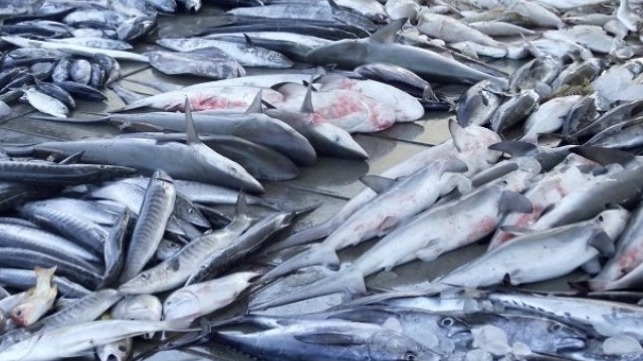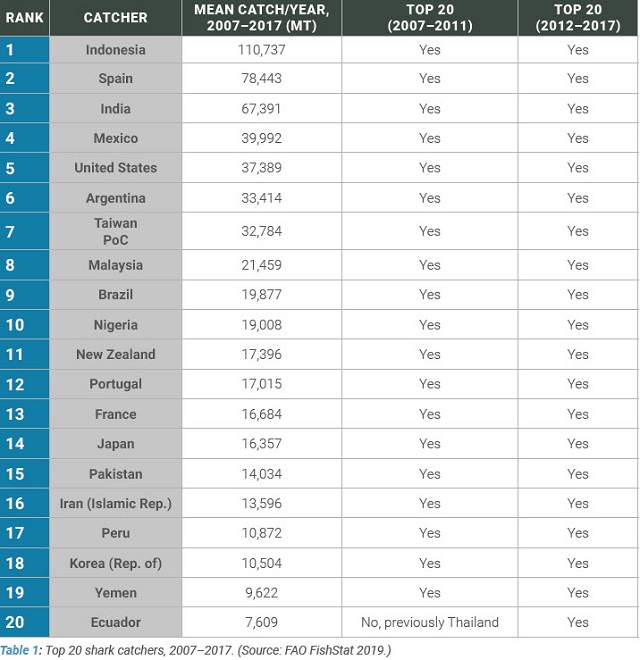Indonesia Tops Shark Catcher List

The NGO TRAFFIC has released a study identifying the world’s top 20 shark and ray catchers and traders, who collectively account for some 80 percent of the global reported catch.
Commercial and artisanal vessels from Indonesia, Spain, India, Mexico and the U.S. topped the list of catchers between 2007 and 2017, with a combined total of 333,952 tons caught on average each year. Indonesia was the top global shark catcher with a mean catch of 110,737 tons per year. The Atlantic Ocean accounted for 80 percent of recent catches.

Shark fin consumption in East Asia, traditionally eaten as a soup during celebratory occasions, is a key driver of trade. An average of 16,177 tons per year of shark fin products (with an average value of $294 million per year) were reported as imported worldwide during 2000–2016.
The world’s four largest importers of shark fin accounted for 90 percent of average annual global imports of fins during the same period. Hong Kong was the largest, importing an average of 9,069 tons of shark fin a year over this period, followed by Malaysia (average 2,556 tons/year), mainland China (1,868 tons/year), and Singapore (1,587 tons/year).
The main importers of shark and ray meat were Brazil, Spain, Uruguay and Italy, which accounted for 57 percent of the average global imports of shark meat over the past decade.
Sharks are particularly vulnerable to over-fishing due to their slow growth, relatively late age of maturity and low fecundity. Their broad distribution and migratory nature also pose increased difficulties when designing and implementing effective measures to prevent over-exploitation.
These challenges are evident from declines observed across a broad range of species. Approximately 17 percent of shark and rays remain listed in the Critically Endangered, Endangered and Vulnerable categories of the IUCN’s Red List, with a further 13 percent listed as Near Threatened, and 47 percent as Data Deficient.
Only 23 percent of shark and ray species are considered to be of Least Concern – the lowest proportion of all vertebrate species.
The release of An overview of major shark traders, catchers, and species follows the successful listing of Longfin and Shortfin Mako Sharks in CITES Appendix II at the 18th Conference of the Parties held in Geneva last month. The proposals were accepted in response to population declines contributed to by over-exploitation and unsustainable trade.
“We have seen a greater use of trade controls through CITES over the last decade as a response to declines in sharks and rays being overfished for trade,” said Glenn Sant, TRAFFIC’s Senior Advisor on Fisheries Trade and Traceability. “We would also like to see major importers scrutinizing the sustainability of the shark and ray products they import using tools such as M-Risk, developed by TRAFFIC. Major importers need to take responsibility for their sustainability footprint as a result of importing products from species at high risk of over-exploitation.”
